Best Indoor Plants
- February 7, 2024
- 0 comment
In a world where urbanization and indoor living dominate our lifestyles, the need to reconnect with nature becomes increasingly essential. Indoor plants not only add a touch of greenery to our living spaces but also provide a myriad of benefits, including purifying the air, reducing stress, and enhancing overall well-being.
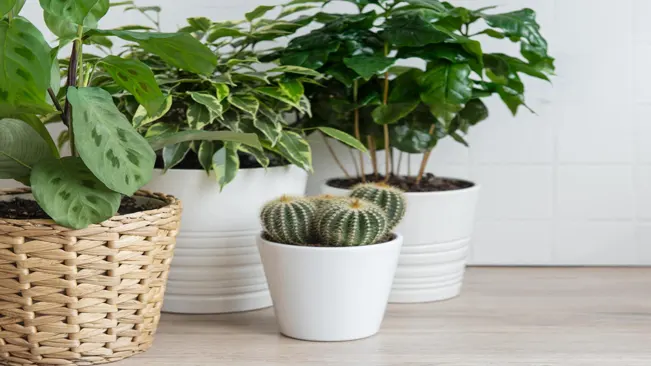
Benefits of Indoor Plants
| Description | |
|---|---|
| Improved Indoor Air Quality | Indoor plants act as natural air purifiers, removing toxins and pollutants from the air through phytoremediation. |
| Stress Reduction | Being around indoor plants has been shown to reduce stress levels and promote feelings of calmness and well-being. |
| Enhanced Décor | Indoor plants add beauty and visual interest to indoor spaces, enhancing the aesthetic appeal of homes and offices. |
| Connection with Nature | Indoor plants provide a way to reconnect with nature and bring a piece of the outdoors into indoor living environments. |
| Productivity and Creativity Boost | Having indoor plants in workspaces can increase productivity, creativity, and overall job satisfaction. |
Snake Plant (Sansevieria trifasciata)
Known for its striking upright leaves, the snake plant is a hardy species that thrives in low light conditions. It’s an excellent choice for beginners as it requires minimal maintenance and is highly resilient to neglect. Additionally, snake plants are known for their air-purifying properties, making them ideal for improving indoor air quality.
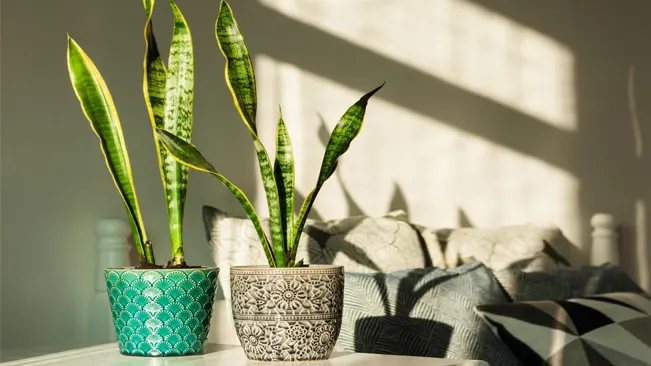
Spider Plant (Chlorophytum comosum)
With its arching foliage adorned with tiny spiderettes, the spider plant adds a whimsical charm to any indoor space. Easy to care for and adaptable to various light conditions, this plant is perfect for hanging baskets or as a tabletop centerpiece. Spider plants are also known for their air-purifying abilities and are safe for households with pets.
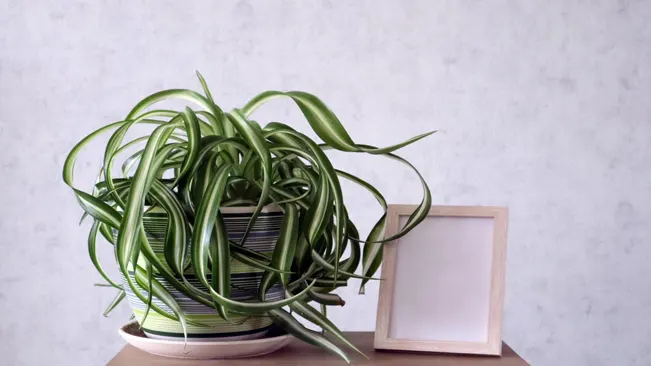
Pothos (Epipremnum aureum)
Renowned for its trailing vines and heart-shaped leaves, pothos is a versatile and resilient plant that can thrive in low-light environments. It’s an excellent choice for adding greenery to shelves, mantels, or even as a hanging plant. Pothos is also known for its air-purifying qualities and is exceptionally forgiving of occasional neglect.
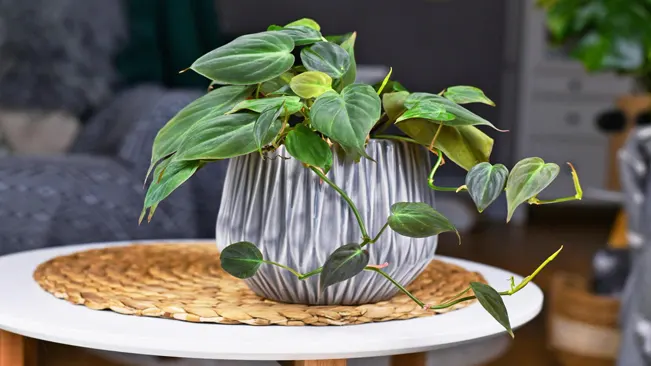
Peace Lily (Spathiphyllum)
With its elegant white flowers and glossy green foliage, the peace lily adds a touch of sophistication to any indoor setting. It prefers low to moderate light and thrives in consistently moist soil. Beyond its aesthetic appeal, the peace lily is known for its ability to purify indoor air by removing toxins such as formaldehyde, benzene, and ammonia.
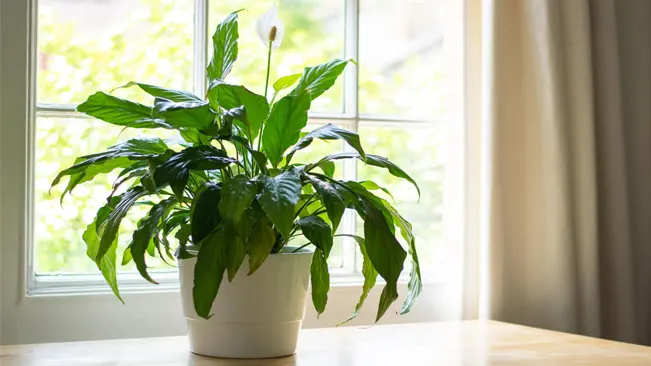
ZZ Plant (Zamioculcas zamiifolia)
Characterized by its thick, waxy leaves and upright growth habit, the ZZ plant is virtually indestructible, making it perfect for busy individuals or those with limited gardening experience. It thrives in low light conditions and requires minimal watering, making it an excellent choice for offices or spaces with little natural light.
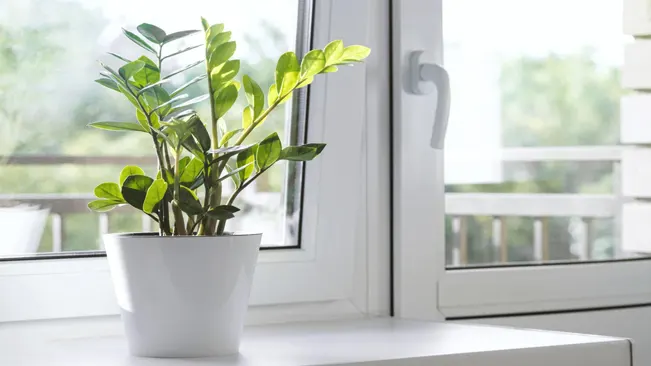
Rubber Plant (Ficus elastica)
With its broad, shiny leaves and striking silhouette, the rubber plant adds a touch of drama to any indoor space. It prefers bright, indirect light and thrives in well-draining soil. Regular pruning can help maintain its shape and encourage bushier growth. The rubber plant is also an excellent air purifier, making it a stylish and practical addition to any home or office.
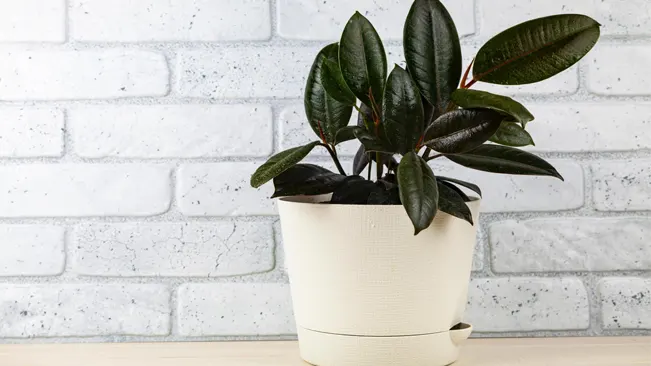
Chinese Money Plant (Pilea peperomioides)
Also known as the “pancake plant” or “missionary plant,” the Chinese money plant features round, pancake-shaped leaves on slender stems, making it a unique and eye-catching addition to any indoor garden. It prefers bright, indirect light and thrives in well-draining soil. With its compact size and easy-going nature, the Chinese money plant is perfect for small spaces or beginner plant enthusiasts.

Bird’s Nest Fern (Asplenium nidus)
With its lush, cascading fronds and distinctive nest-like appearance, the bird’s nest fern adds a tropical touch to any indoor oasis. It thrives in moderate to low light conditions and prefers consistently moist soil. Regular misting can help maintain humidity levels and keep its foliage looking vibrant and healthy.
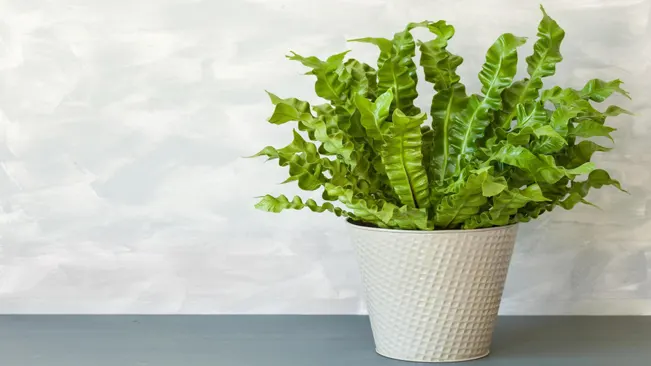
Philodendron (Philodendron spp.)
With its diverse range of species and striking foliage, the philodendron is a popular choice among indoor gardeners. From the heart-shaped leaves of the classic heartleaf philodendron to the velvety texture of the philodendron micans, there’s a variety to suit every taste and preference. Philodendrons are relatively low-maintenance and can adapt to a wide range of light conditions, making them an excellent choice for beginners.

Aloe Vera (Aloe barbadensis miller)
Not only is aloe vera renowned for its medicinal properties, but it also makes a beautiful and practical addition to any indoor garden. Its fleshy, succulent leaves not only add visual interest but also contain a gel that can soothe sunburns and skin irritations. Aloe vera prefers bright, indirect light and well-draining soil, making it an ideal plant for sunny windowsills or tabletops.
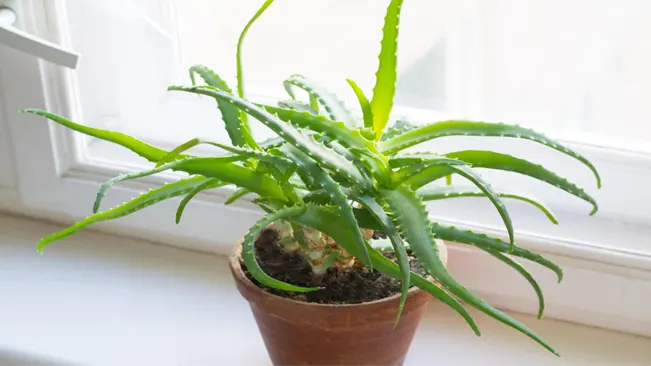
Care and Maintenance of Indoor Plants
Watering
Different plants have varying water needs, so it’s crucial to understand the specific requirements of each plant species. Water thoroughly until the soil is evenly moist, but not waterlogged. Allow the soil to dry out slightly between waterings to prevent root rot. Use room temperature water and avoid letting water accumulate in the saucer beneath the pot to prevent waterlogging.

Light
Most indoor plants require adequate light to thrive, but the intensity and duration of light needed vary depending on the plant species. Place plants in locations where they receive the appropriate amount of light according to their specific requirements. Monitor for signs of inadequate or excessive light, such as yellowing leaves or leggy growth.
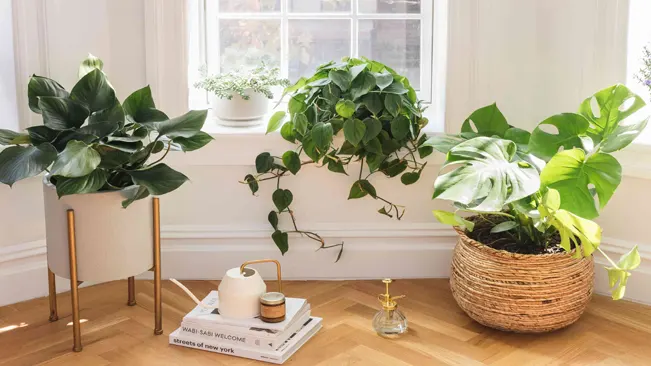
Temperature and Humidity
Indoor plants generally prefer temperatures between 60-75°F (15-24°C) during the day and slightly cooler temperatures at night. Maintain consistent humidity levels, especially for tropical plants, by misting the foliage, placing a tray of water near the plant, or using a humidifier.
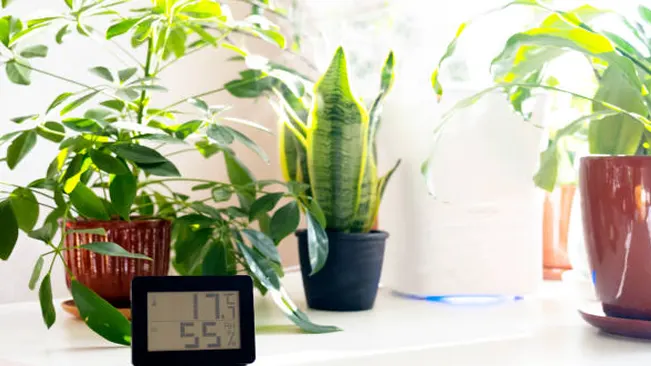
Soil and Potting
Use well-draining potting soil specifically formulated for indoor plants to prevent waterlogging and promote healthy root growth. Repot plants as needed to provide adequate space for root expansion and to refresh the soil. Repotting is typically done every 1-2 years or when roots outgrow the pot.

Fertilizing
Feed indoor plants with a balanced liquid fertilizer during the growing season (spring and summer) to provide essential nutrients for healthy growth. Follow the instructions on the fertilizer package for proper dilution and frequency of application, as over-fertilizing can lead to salt buildup and plant damage.

Pruning and Grooming
Regularly remove dead or yellowing leaves, spent flowers, and any other debris to promote airflow and prevent the spread of disease. Prune plants to maintain their shape, encourage bushier growth, and remove leggy or damaged stems.
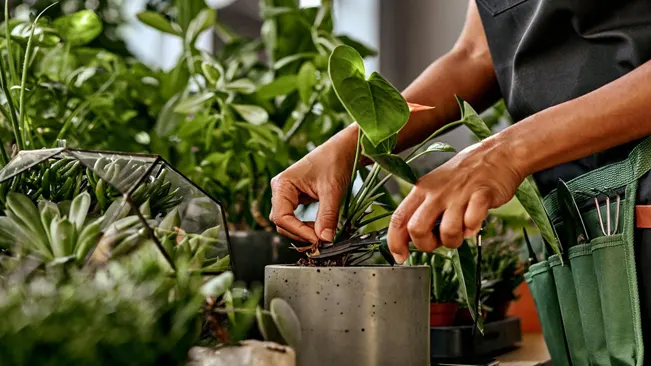
Pest Control
Monitor plants regularly for signs of pests such as aphids, spider mites, or mealybugs. Treat infestations promptly using organic or chemical insecticides as needed. Quarantine affected plants to prevent pests from spreading to other plants.
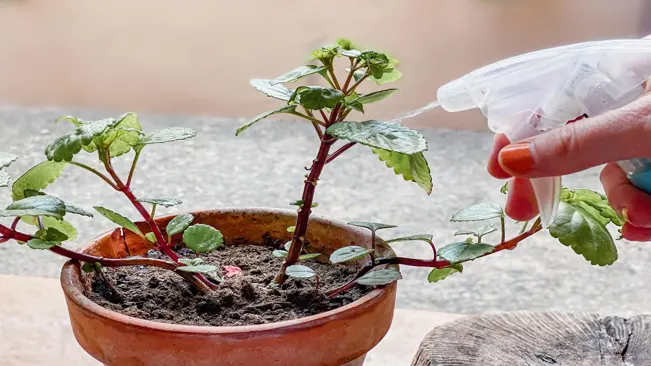
Monitoring and Adjusting
Pay attention to your plants’ appearance and behavior, including leaf color, texture, and growth rate, to identify any signs of stress or nutrient deficiencies. Make adjustments to care routines as needed based on seasonal changes, environmental conditions, and the individual needs of each plant.
Indoor Plants Pros and Cons
Pros
- Improved Indoor Air Quality: Indoor plants act as natural air purifiers, removing toxins and pollutants from the air through a process called phytoremediation. They absorb carbon dioxide and release oxygen, creating a healthier indoor environment.
- Stress Reduction: Studies have shown that being around indoor plants can reduce stress levels and promote a sense of calmness and well-being. The presence of greenery indoors has been linked to lower blood pressure and improved mood.
- Enhanced Décor: Indoor plants add beauty and visual interest to any space, enhancing the aesthetic appeal of homes, offices, and other indoor environments. They come in a variety of shapes, sizes, and colors, allowing for endless creative possibilities in interior design.
- Connection with Nature: In today’s urbanized world, indoor plants provide a way to reconnect with nature and bring a piece of the outdoors into indoor living spaces. Tending to plants can be therapeutic and fulfilling, fostering a sense of connection with the natural world.
- Productivity and Creativity Boost: Research suggests that having indoor plants in workspaces can increase productivity, creativity, and overall job satisfaction. Greenery can help reduce distractions, improve focus, and create a more conducive environment for concentration and innovation.
Cons
- Maintenance Requirements: Indoor plants require regular care and maintenance, including watering, pruning, fertilizing, and pest control. For individuals with busy lifestyles or limited gardening experience, keeping indoor plants healthy and thriving may require extra effort and time.
- Potential for Allergies and Sensitivities: Some people may be allergic to certain types of indoor plants or sensitive to pollen, mold, or other allergens associated with plant care. It’s essential to choose plants carefully and be mindful of any allergic reactions or respiratory issues that may arise.
- Risk of Pests and Diseases: Indoor plants can attract pests such as aphids, spider mites, and fungus gnats, as well as fungal diseases like powdery mildew and root rot. Proper plant care, including regular inspection and treatment, is necessary to prevent and manage pest and disease infestations.
- Space Limitations: Indoor plants require adequate space to grow and thrive, which may be limited in small or crowded living environments. It’s essential to choose plants that suit the available space and to avoid overcrowding to prevent competition for light, water, and nutrients.
- Toxicity Concerns: Some indoor plants, particularly those with toxic leaves or sap, can pose a risk to pets and young children if ingested. It’s crucial to research plant toxicity and take precautions to keep poisonous plants out of reach or choose non-toxic alternatives in households with pets or young children.
Conclusion
incorporating indoor plants into your living space is an excellent way to enhance your surroundings while reaping the numerous benefits they offer. Whether you’re looking to purify the air, reduce stress, or simply add a touch of greenery to your home, the ten plants listed above are sure to delight both novice and experienced gardeners alike. So go ahead, bring the outdoors in, and transform your home into a lush and vibrant sanctuary.
FAQs (Frequently Asked Questions)
- What are the best indoor plants for beginners?
Beginners often find success with low-maintenance plants such as snake plants, pothos, spider plants, and ZZ plants. - Which indoor plants require the least amount of light?
Plants that thrive in low-light conditions include snake plants, pothos, ZZ plants, and peace lilies. - What indoor plants are safe for households with pets?
Pet-friendly options include spider plants, Boston ferns, air plants, and some varieties of palms and succulents. - How often should indoor plants be watered?
Watering frequency varies depending on factors like plant type, size, and environmental conditions, but a general rule is to water when the top inch of soil feels dry to the touch. - What are some indoor plants that purify the air?
Plants known for their air-purifying qualities include snake plants, peace lilies, spider plants, pothos, and rubber plants. - Can indoor plants thrive without natural sunlight?
Yes, several indoor plants can adapt to low-light conditions and thrive under artificial lighting, such as snake plants, ZZ plants, and pothos. - How do I prevent indoor plants from attracting pests
Regularly inspecting plants for signs of pests, maintaining good airflow around plants, and avoiding overwatering can help prevent pest infestations. - What are some indoor plants that are suitable for small spaces?
Compact plants like succulents, air plants, Chinese money plants, and small varieties of ferns are ideal for small living spaces. - What indoor plants are known for their unique foliage?
Plants with distinctive foliage include prayer plants with their patterned leaves, fiddle leaf figs with their large, glossy leaves, and calathea varieties known for their vibrant colors and intricate patterns. - How do I choose the right indoor plants for my specific environment?
Consider factors such as lighting conditions, humidity levels, available space, and personal preferences when selecting indoor plants to ensure they thrive in your environment.

Kristine Moore
Forestry AuthorI'm Kristine Moore, a seasoned garden landscaping professional with over 30 years of experience. My extensive career has been dedicated to transforming outdoor spaces into stunning, sustainable landscapes. With a deep understanding of horticulture, design principles, and environmental stewardship, I have become a respected figure in the field, known for creating harmonious, visually appealing, and eco-friendly gardens. My commitment to excellence and continuous learning in landscaping trends and techniques has solidified my reputation as an expert in garden design and implementation.













Leave your comment